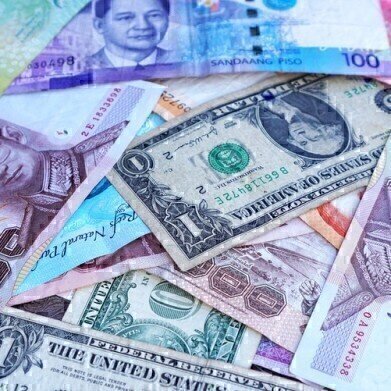LC-MS
Is Your Money Laced with Cocaine? — Chromatography Investigates
Mar 17 2017
Dirty money — not in this case money earned by illicit means — but banknotes contaminated with illicit substances has long been an urban myth. But it seems that the myth isn’t really a myth — as several studies over the years have found. Let’s take a look at the plight of dirty money and see how the introduction of the ‘plastic fiver’ might clean things up.
Dirty paper money
Sometime in the early 1990s it was suggested that banknotes were covered in cocaine — and studies seemed to back up the claims both in Europe and in the US. The notes became contaminated either through being used in snorting the drug or by cross contamination with banknotes originally used in drug transactions.
The problem was so big in the US that people couldn’t be arrested if sniffer dogs detected cocaine as the source might be banknotes. The UK isn’t immune either: the Financial Times carryied a report with the headline that ‘Cocaine found on all banknotes’ — and a bus driver from Bristol was awarded compensation after successfully arguing that it was handling contaminated banknotes that caused him to fail a drug test.
Cocaine from the ‘hole in the wall’
With so much contamination, is it possible to still spot differences in clean ‘dirty money’ versus dirty ‘dirty money’? A major study published in the Journal of Forensic Sciences — ‘The Quantitation of Cocaine on U.S. Currency: Survey and Significance of the Levels of Contamination’ — looked at samples taken from banknotes over a seventeen year period.
Overall, more than 4100 banknotes were analysed by various organisations including the FBI. Some of the banknotes came from criminal investigations involving cocaine while others were from normal circulation. The initial tests were conducted using gas chromatography mass spectrometry, while later samples were analysed by liquid chromatography mass spectrometry. The use of chromatography in drug discovery is discussed in the article, A Simplified Mixed-Mode Sample Preparation Strategy for the LC-MS/MS Analysis of Benzodiazepines and Z-Drugs for Forensic Toxicology.
The team found that over 93% of the banknotes were contaminated with cocaine, with various levels of cocaine found on many different denominations. But one of the principal findings was that a banknote first becomes contaminated when the note passes through a currency counter machine in a bank or retail outlet. So, cocaine from the ‘hole in the wall’.
Cleaner plastic money
With the UK recently following other countries in introducing plastic banknotes, will the situation improve? Evidence so far suggests that plastic notes are significantly cleaner when it comes to germs than the old paper notes. The situation is likely to be the same with cocaine.
Researchers have found that bacteria stick to plastic notes less than they stick to the old paper money. Other research has shown that the UK has the dirtiest money in Europe, with 26,000 different types of bacteria being found on the notes and coins in circulation.
That really is dirty money.
Digital Edition
Chromatography Today - Buyers' Guide 2022
October 2023
In This Edition Modern & Practical Applications - Accelerating ADC Development with Mass Spectrometry - Implementing High-Resolution Ion Mobility into Peptide Mapping Workflows Chromatogr...
View all digital editions
Events
Apr 28 2024 Montreal, Quebec, Canada
May 05 2024 Seville, Spain
May 15 2024 Birmingham, UK
May 19 2024 Brno, Czech Republic
May 21 2024 Lagos, Nigeria














